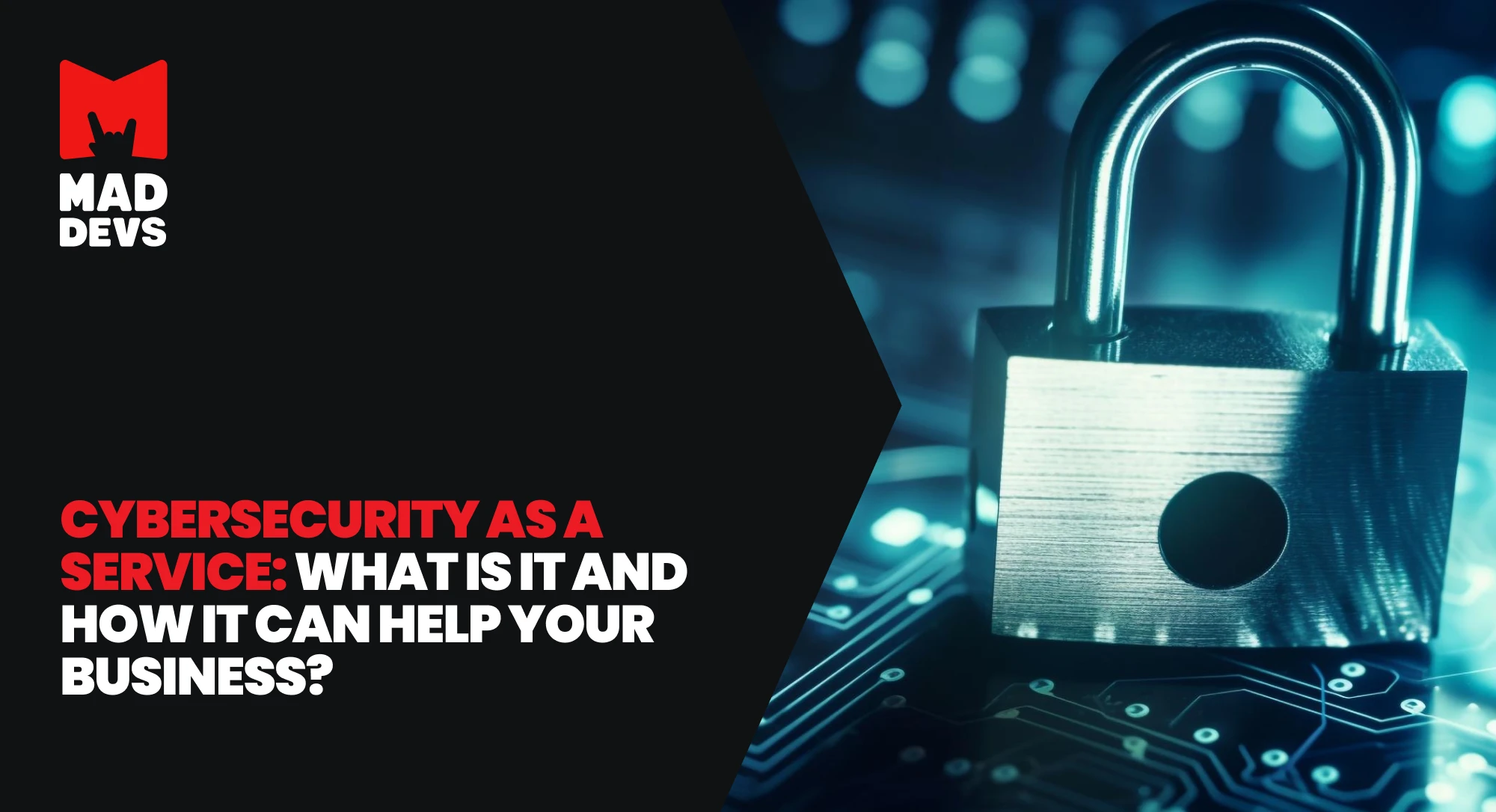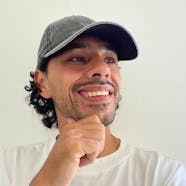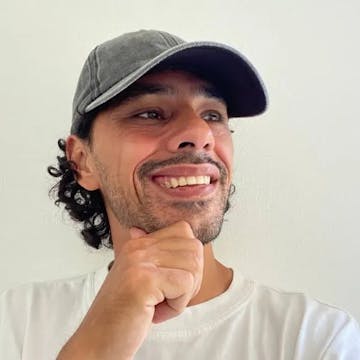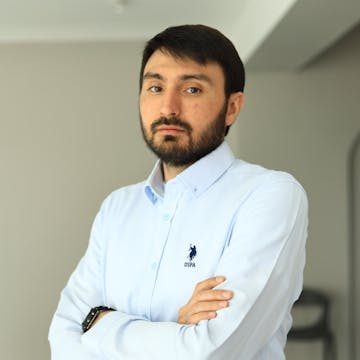Cybersecurity has been around for several decades. Over this time, many security practices have emerged, and some were initially performed manually. The constant need to apply them prompted developers to create tools for continuous implementation. As the number of tools grew over the years, new solutions appeared that combined multiple cybersecurity tools in one.
Among these are threat monitoring and detection, which SIEM providers facilitate. Also included here are advanced technologies, such as machine learning for deeper monitoring and automated threat response, provided by MSSP and MDR services. In this article, we will discuss the distinctions between SIEM, MSSP, and MDR in detail.
You will learn more about the following:
- Opportunities and risks SIEM, MSSP, and MDR pose for organizations
- Qualifications and resources SIEM, MSSP, and MDR demand from organizations
- Types of organizations and industries are most likely or unlikely to find SIEM, MSSP, or MDR suitable as their primary security solution
Let's dive into it.
SIEM vs. MSSP vs. MDR
Here, we take the SOC2 security criteria as our basis. Many general standards focus mainly on certain security principles, such as the security of personal data, transactions, etc. Unlike them, SOC2 covers more principles, such as security, availability, processing integrity, confidentiality, and privacy. SOC2 also prioritizes different principles for each organization depending on their type of industry and standardizes the corresponding reporting to regulatory authorities. Comprehensive solutions such as SIEM, MSSP, and MDR are direct tools for maintaining security about SOC2 principles.
SIEM
Security Information and Event Management (SIEM) software is an integrated solution designed to ensure the information security of organizations, often supported by an internal SOC (Security Operations Center). It comprises two main components:
- SIM (Security Information Management) for data storage, aggregation, and analysis,
- SEM (Security Event Management) for event monitoring, correlation, and notifications.
SIEM also offers tools for forensic investigations, dashboard creation, and reporting. However, it generally does not provide active threat response measures like automatic blocking or device isolation. In the context of managed SIEM services, these solutions are often the backbone of internal and external SOC operations.
However, more often SIEM is used in its traditional variant with full integration and adaptation of the entire infrastructure and its operation by the internal security team, which directly offers some advantages in relation to other solutions, as we will discuss further.
MSSP
Managed Security Service Provider (MSSP) is a cyber security service provided by external SOC teams that also utilize SIEM as a foundation but supplement it with additional solutions. MSSP providers may include managing security devices such as IDS/IPS, as well as network traffic monitoring and security policy consulting services.
So they offer a broader scope compared to traditional managed SIEM solutions and allow for deeper threat analysis and monitoring but also often do not offer comprehensive capabilities for active vulnerability response or process automation.
MDR
Managed Detection & Response (MSR) is also a cyber security service provided by external SOC teams that use SIEM for data collection, analysis, and additionals as IDS/IPS, same as MSSP. However, the main difference between MSSP and MDR lies in the integration of advanced technologies such as machine learning and additionals like EDR (Endpoint Detection and Response) and NDR (Network Detection and Response).
This enables MDR providers to offer the most in-depth data analysis and a high level of automation, including automatic threat response and isolation of compromised sources and devices.
| Characteristic | SIEM | MSSP | MDR |
|---|---|---|---|
| Use of Internal vs. External Security Team | Mostly internal SOC | External SOC | External SOC |
| Level of Control by the Organization | High | Medium | Medium-low |
| Active vs. Passive Threat Response | Passive | Mostly passive, particularly active | Active |
| Speed of Incident Response | Depends on configuration | Fast, but provider-dependent | Mostly very fast |
| Automation of Security Measures | Limited | Limited-medium | High |
| Depth of Data Analysis | Medium | Medium-high | High |
| Complexity of Management and Operation | High | Medium | Low |
| Challenges in Management and Scalability | High | Medium-high | Low |
How should businesses choose between SIEM, MSSP, and MDR?
Companies need to consider more than just technical aspects when selecting security solutions. There are several ways in which SIEM, MSSP, and MDR can impact business processes, resource utilization, and more. Let's discuss this in detail.
How can SIEM, MSSP, and MDR impact overall business processes?
Each solution has a direct influence on business processes and requires different levels of effort for quality integration with existing business operations. The key difference here is that SIEM demands full-scale integration with the entire infrastructure and places complete responsibility on the organization for utilizing this solution. In the case of MSSP and MDR services, organizations are required to have less direct responsibility, but there are still specific considerations.

SIEM
- SOC Manager. Responsible for strategic planning and managing SOC operations, they coordinate actions between analytical, incident, and compliance teams. This role requires knowledge of risk management principles, security standards like ISO 27001 and NIST, and experience with SIEM platforms.
- Security Analysts. Perform monitoring and analysis of data collected by SIEM to identify potential threats. They use correlation algorithms to recognize anomalous behavior and potential incidents.
- Incident Responders. Specializing in responding to incidents identified by the SIEM system, they develop incident response plans and coordinate actions with other teams to minimize damage.
- Forensic Analysts. They conduct a detailed analysis of incidents post-detection and use SIEM tools for evidence collection and investigation.
- Compliance Officers. Responsible for ensuring compliance with standards and regulations. They use data and reports from SIEM to demonstrate compliance to external auditors and regulators.
MSSP and MDR
- Security Liaison Officer. Responsible for coordinating between internal teams and the MSSP or MDR service providers. This specialist should have in-depth knowledge of cybersecurity and project management to interact with external providers effectively.
- Contract Manager. Handles the legal aspects of collaborating with an MSSP or MDR, including SLAs and compliance with standards. This specialist should understand both legal and technical aspects to ensure contract and SLA compliance with security requirements.
When do various industrial certificates or standards require the use of SIEM, MSSP, and MDR?
Industrial certifications that allow companies to operate in critical areas fully often require the use of specific solutions. The certificates do not provide direct requirements, but certain solutions become indispensable tools to ensure compliance.

SIEM
The use of SIEM often becomes necessary when complying with common standards like ISO 27001, PCI DSS, and HIPAA. These standards require a systematic approach to information security management, including monitoring and auditing security events. SIEM helps organizations meet these requirements by providing data aggregation, storage, and analysis tools.
MSSP
The use of MSSP services may be recommended for organizations that lack the resources for an in-house SOC but need to comply with general standards like GDPR for data processing and storage. Many MSSP providers can offer the necessary expertise and infrastructure for compliance, although this varies depending on the provider.
MDR
This service is often recommended for organizations that fall under strict or specific regulatory requirements, such as FISMA or NERC CIP. These standards require not just monitoring but also active incident response, which MDR provides. However, it is important to note that in many industries requiring strict regulation, the use of third-party solutions for protection or data processing may also be prohibited, making SIEM a viable alternative.
What potential security risks are associated with using SIEM, MSSP, and MDR?
We briefly discussed some potential risks from SIEM, MSSP, and MDR in core business processes. However, we will consider the specific risks of implementing and using such solutions here.

SIEM
- Risk of misconfiguration.
SIEM systems often have complex configurations that require a deep understanding of both the system itself and the organization's network infrastructure. Configuration errors can lead to incomplete or incorrect data aggregation, which, in turn, can result in data leakage or insufficient monitoring. Employing a configuration management database (CMDB) and automated validation checks is crucial to ensure alignment with security policies and vet configurations for errors before implementation. - Risk of false positives.
SIEM systems use various algorithms and rules for detecting anomalies and potential threats. Incorrectly configured or overly sensitive rules can generate many false positives. This not only distracts teams but can also lead to "alert fatigue," reducing the response to real incidents. It is important to implement a tiered alerting system that categorizes alerts by severity and likelihood and to review and fine-tune detection rules to minimize false positives regularly.
MSSP and MDR
- Data leakage risk.
When using MSSP or MDR services for security management, your organizational data is transmitted and stored on the provider's servers. This creates additional attack vectors and increases the risk of data leakage. It is crucial to carefully examine the provider's data encryption, storage mechanisms, and third-party policies. - SLA non-compliance risk.
SLAs define the quality parameters of the service, including incident response time and service availability. Non-compliance with these parameters can lead to operational losses and reputational risks. It is important to have real-time SLA compliance monitoring and mechanisms for rapid response to violations. - Provider abuse risk.
The provider has access to sensitive data and systems of the organization. Insufficient control mechanisms or internal threats on the provider's side can lead to unauthorized access or abuse. It is important to regularly assess and update security policies concerning the provider. - Lack of customization risk.
MSSP and MDR services may not consider the unique requirements or risks of a specific business. This can reduce the effectiveness of threat detection and incident response. Organizations should analyze the customization capabilities of the solution and its integration with existing and potential business operations. - Risk of incorrect response.
MDR services often offer automated analysis and response to threats. Incorrect automation settings can lead to the blocking of legitimate operations or even the shutdown of mission-critical systems. Therefore, all automated scenarios must be carefully thought out before being activated in the operational environment.
Businesses need to consider the obvious costs of each of these solutions, where SIEM requires significantly larger initial investments and ongoing expenses than other solutions, and also possible additional or hidden costs. We will also examine these in more detail.

SIEM
Direct costs:
- Software licensing. Costs can range from tens of thousands to several hundred thousand USD, depending on the organization's size and data volume.
- Hardware. For on-premises solutions, the cost of owning and maintaining servers and storage can range from tens of thousands to several hundred thousand USD.
- Operational expenses. Salaries for the security team managing the SIEM can range from seventy to a few hundred thousand USD per year per specialist.
Hidden costs:
- Staff training. The complexity of SIEM requires specialized training, which can cost up to five thousand USD per employee for certification and maintenance.
- Configuration and tuning. Configuration and tuning phases may require an additional 200-400 hours of work.
- Updates and scaling. The cost of updates and additional modules can be up to 20% of the initial licensing cost.
MSSP
Direct costs:
- Monthly/annual fee. Ranges from several thousand to tens of thousands of USD per month, depending on the complexity of the infrastructure and data volume.
- Operating costs. In the case of MSSP, a minimum number of in-house security specialists is necessary compared to SIEM, where a whole internal team is needed. However, the salary of each such employee can still range from seventy to several hundred thousand USD per year per specialist.
Hidden costs:
- Integration costs. Implementation may separately require several thousand to tens of thousands of USD depending on the complexity of the infrastructure and desired functionality.
- Additional services. Extended monitoring, forensics, and other services may incur additional costs depending on the service provider's pricing policy and set of additional features.
MDR
Direct costs:
- Monthly/annual fee. Similar to MSSP, costs can range from several thousand to tens of thousands of USD per month, depending on the level of service and organization size. However, it is often more expensive than MSSP due to the use of more technologies and specialists for security.
- Operational costs. As with MSSPs, hiring just a few security professionals to work with MDR is many times less expensive than with SIEMs. However, their salary still ranges from seventy to several hundred thousand USD per year per specialist.
Hidden costs:
- Integration costs. Also ranges from several thousand to tens of thousands of USD but is generally more expensive than MSSP.
- Specialized analysis tools. Some MDRs may require additional analysis tools like machine learning and automation settings, which can also create additional costs ranging from several thousand USD.
Who is SIEM suitable for?
- Organizations with mandatory regulatory compliance requirements
SIEM is a convenient tool that can be mandatory for companies required to adhere to standards such as PCI DSS, HIPAA, or GDPR. This is particularly relevant for financial and healthcare institutions, as well as any companies dealing with sensitive personal data. - Organizations with distributed infrastructures
SIEM is an optimal solution for companies with multi-tiered networks and various access points that require centralized data collection from different devices and systems in diverse locations. SIEM enables centralized data management, reduces incident analysis time, and correlates events to detect complex attacks. Examples may include companies with multiple branches or remote offices, such as retail chains, transportation companies, or global corporations with offices in different countries. - Organizations with internal cybersecurity teams
SIEM is primarily suitable for large companies with various departments, with a full-fledged SOC team capable of maintaining and supporting the SIEM system. This is often the case for large technology companies involved in software or hardware development, as well as research institutions and government agencies that require a high level of security and sufficient resources to maintain the necessary teams providing an additional level of analytics and reporting.
Who is SIEM not suitable for?
- Small organizations with limited resources
As we mentioned earlier, SIEM is a costly solution that also requires a whole security team to operate. For early-stage or small companies such as startups, small online stores, and local consulting agencies, the implementation and maintenance of SIEM may be impossible to afford due to significant investments and specialized skills. - Organizations without clearly defined compliance requirements
If a company is not subject to strict regulatory requirements regarding information security, investments in SIEM may be excessive. Examples here may include small manufacturing enterprises or small media agencies that generally do not deal with much personal or sensitive data. - Organizations needing rapid response and high automation
SIEM focuses on monitoring and analytics but does not offer a wide range of tools for rapid incident response. This may not suit many companies that need this the most, from satellite communication providers, emergency response services, and security agencies to high-volatility trading exchanges and other companies with high operational requirements.
Who is MSSP suitable for?
- Organizations lacking specialized information security teams
For businesses without the internal resources or expertise to manage complex security systems, an MSSP offers a comprehensive solution. This is particularly relevant for small and medium-sized enterprises in the service sector, where internal resources are often limited. MSSPs can provide network traffic monitoring, threat management, and regular security status reports. - Companies with limited information security budgets
Organizations with constrained financial resources, such as non-profit institutions and educational organizations, can find MSSP to be a cost-effective means of achieving a baseline level of security. MSSPs offer modular solutions that scale according to needs and budget, including cloud-based options to minimize hardware and software costs.
Who is MSSP not suitable for?
- Organizations with high customization requirements
Large corporations with intricate and complex infrastructures may have unique security system requirements. Standard MSSP service packages often lack customization capabilities, which may not meet the need for flexibility and integration with existing internal systems. - Companies with strict regulatory compliance needs
As previously discussed, organizations in sectors requiring strict adherence to standards and regulations may encounter limitations with MSSPs. These limitations could include insufficient audit depth, limited customization of reports and logs, and the inability to integrate with existing systems for continuous monitoring and compliance.
Who is MDR suitable for?
- Organizations with stringent or specific requirements
This includes companies subject to standards like FISMA or NERC CIP, which demand a deeper level of monitoring and analytics than commonly accepted standards like PCI DSS or HIPAA. These organizations are usually involved in critical infrastructure, such as power plants and water supply systems. Defense sector companies, including military equipment manufacturers and research organizations. Financial organizations with high-risk profiles include stock exchanges and high-frequency trading companies. Healthcare organizations with particularly sensitive data, for example, research labs or hospitals dealing with rare or dangerous diseases. Tech and cybersecurity companies offering cybersecurity services or developing information protection products. - Organizations with high operational response requirements
Companies operating in dynamic and risky sectors, such as fintech startups, large e-commerce platforms, or cloud service providers, often need rapid and effective responses to security incidents. In these cases, MDR provides not just 24/7 monitoring but also expert analytics, event correlation, and immediate action measures. This is especially useful for organizations with minimal internal information security teams but requires additional expert support and specialized tools for quick threat detection and response. MDR can integrate with existing security systems, supplementing and enhancing internal resources and processes, thereby providing a comprehensive and multi-layered approach to risk and incident management.
Who is MDR not suitable for?
- Small organizations with limited resources
Although MDR is a service that significantly reduces the costs of owning a security infrastructure and team compared to SIEM, it is still an advanced solution offering additional security functionalities. Therefore, for small enterprises, the cost of MDR may be a barrier, especially if they do not have high operational response requirements to incidents. - Organizations with specific data requirements
Also, despite advanced security measures compared to comprehensive solutions like SIEM, some companies process particularly sensitive information and cannot share it with third-party providers. They may encounter limitations when using MDR.
Summary
In this article, we've provided an overview of SIEM, MSSP, and MDR, and thoroughly examined the key differences between these solutions.
Now you understand that with traditional SIEM, you can expect full control over security operations, centralized data analysis, and threat detection within your organization. However, this comes at the cost of significant investments, full-scale infrastructure integration, a dedicated security team, and a level of security that directly corresponds to your company's expertise — as does the responsibility for it.
You also know that with MSSP, you relinquish a large portion of security control to a third-party organization but gain expertise you may lack, along with ready-made security solutions possibly supplemented to standard SIEM.
Additionally, you understand that with MDR, you also cede some control and often pay more than with MSSP, but you receive not only deeper monitoring through modern approaches but also active and automated threat response.
What suits your company depends explicitly on many factors, ranging from the industry you operate in and the requirements imposed on it to the size and structure of your organization and its actual capabilities and needs. Choosing among these tools requires careful analysis and consideration of all the factors we've discussed.
If you have further questions about which security solutions would best suit your company, please contact our experts for a free consultation. We will analyze your business in detail and assist you in finding the most beneficial and efficient solution.









